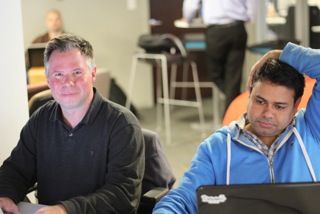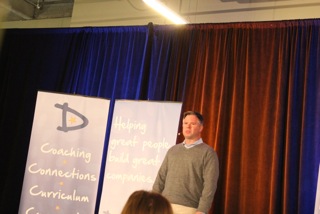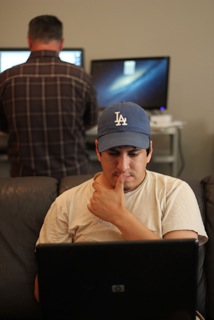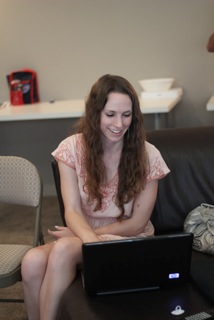Newscastic: Building a Local News Model for the 21st Century - - A First Person Startup Narrative by Cofounder and CEO, Eric Paradis
We met NewsCastic CEO Eric Paradis at SXSW in Austin a few months ago.
Here is his story on how he and his team started NewsCastic, and what it has to do with changes in our media culture and in our communities.
By Eric Paradis, Cofounder and CEO, NewsCastic
Question: What does a bridge collapse in Minneapolis have in common with the Occupy Movement in New York? Answer: They both contributed to the creation of NewsCastic.
Let me explain. The decline of traditional news media is a bit like the weather: everyone complains about it, but no one does much about it. My colleagues—Christopher Ortiz and Mahesh Bajaj—and I, all working at a national cable channel at the time, noticed that local news media were being particularly hard hit by the loss of both advertisers and audiences—although local news itself remains of great interest to people.
Traditional news media, with its outdated economics, seems increasingly unable to supply this information in a compelling way. We noticed that in the cases of both the 2007 Minneapolis bridge collapse and the birth of the Occupy Movement in New York in 2011, some of the most interesting coverage came not from traditional media, but from freelancers and citizen-journalists.
That got us thinking. There had to be a better model for the creation and distribution of local news. There had to be a way to use new sources, new economics, and new technologies to promote local news in a way that worked for reporters, advertisers, and their audiences. We thought there was, so we decided to do so ourselves.
That’s how NewsCastic was born.
We are a marketplace that connects businesses with local journalists as part of a new business model for local news. With NewsCastic, journalists can browse paying story assignments in their localities, which are sponsored by businesses there. A car dealership, for example, might sponsor stories about the local football team; a bank might sponsor stories about local economic development. A journalist accepts a story assignment, writes the story and gets paid for it, and the business puts its sponsorship message on it, which we then post on NewsCastic. As the story is shared with friends and family online and spreads via social media, the business successfully reaches its targeted audience.
We knew that more than the business model for NewsCastic had to be new. The technology model had to be new, as well. If we were going to promote a new business model for the industry, we needed a new model for ourselves, too, one that ratcheted down the traditional risk and expense inherent in founding a technology-based enterprise. Our technology model, like that of many startups, is based on cloud computing.
And, like many startups, it’s based on Windows Azure. We hosted our initial proof of concept on Amazon in PHP, a platform with which we were familiar from our days at the cable channel. But when we looked more closely at the economics—particularly after we joined the Microsoft BizSpark program for startups—Windows Azure and .NET became the best choice. We run our console apps—for managing news feeds and email alerts, for example—on Windows Azure. We use Blob Storage as an easy, straightforward way to host media, such as video. And we can monitor and debug our environments—development, management, and web-facing—better than we could before.
We know that with NewsCastic, we’re dreaming big—and that with Windows Azure and BizSpark, we have the backup to turn our dream into reality.





